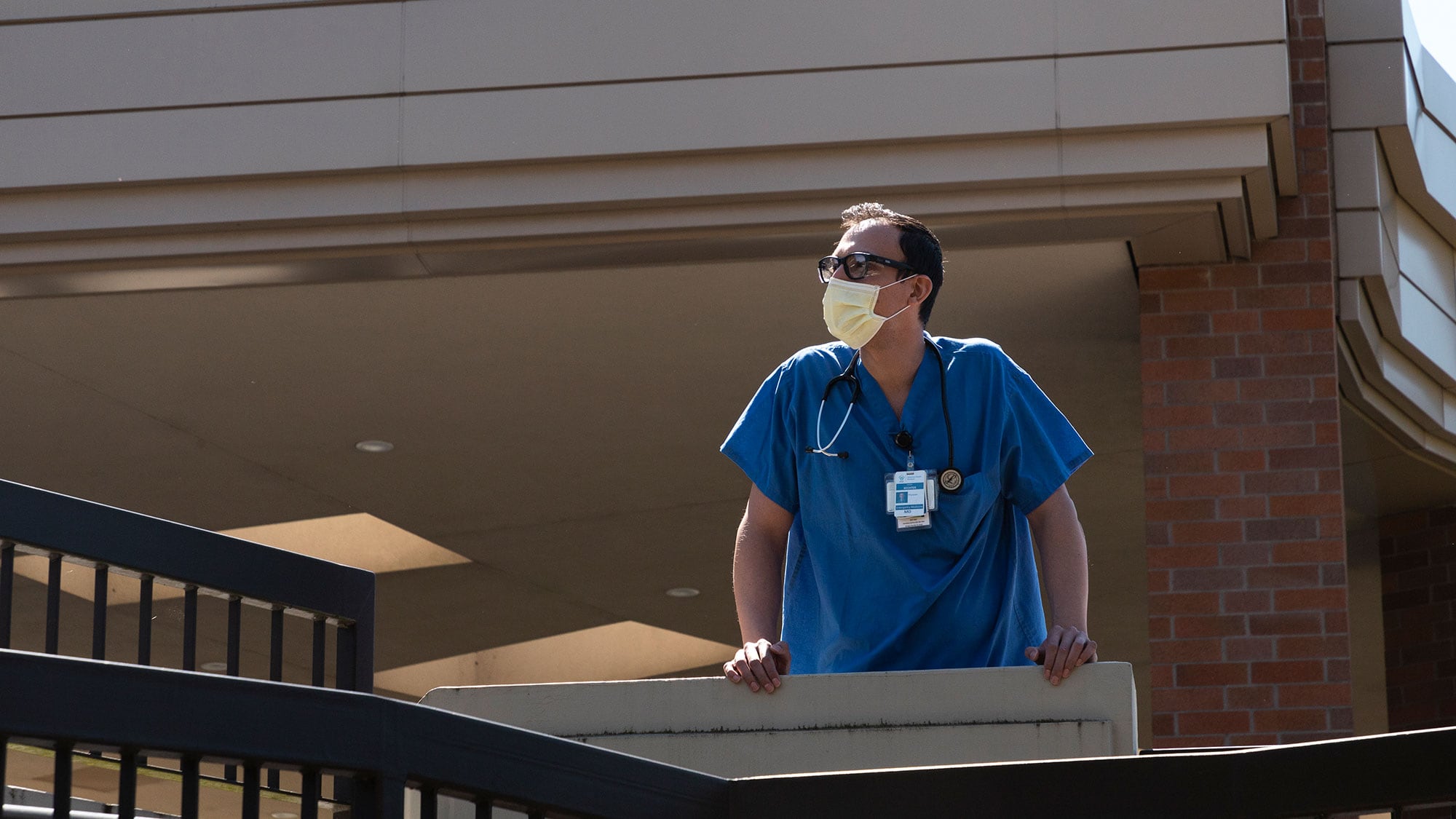Elective surgeries resumed this month at Providence Portland and Providence St. Vincent, two of the city's largest hospitals, after Gov. Kate Brown lifted a ban on nonessential medical procedures.
But the Oregon Nurses Association says something is amiss. It alleges nurses at Providence have only one N95 mask each for an entire shift—and are reusing the same mask for three to five surgeries a day. The union says that's because the stockpile of gear that was supposed to relieve pressure on hospitals never materialized.
"It's incredibly risky," says ONA spokesman Kevin Mealy. "Hospital policies are designed to protect the [supply of] equipment instead of the people using them."
Providence has not responded to requests for comment. But the nurses' union says Providence is not alone in continuing to reuse masks and other personal protective equipment. "It's incredibly commonplace," Mealy adds.
That's dangerous because, in a worst-case scenario, nurses or doctors without adequate PPE could become infected with novel coronavirus during one procedure and then infect any patient they see while still wearing the same coverings.
The U.S. Centers for Disease Control and Prevention recommends hospitals use masks once and then discard them, but on Feb. 4, it issued an emergency standard for PPE—one that no longer required hospitals to replace masks after each patient visit or surgery. Brown allowed hospitals to reopen May 1 for elective procedures, still using that new standard. By the end of May, hospitals will have to return to their usual policy: using masks once before throwing them away.
So while the Oregon Nurses Association argues that elective surgeries should not be allowed while masks are still being reused, the Providence hospitals appear to be complying with state standards.
Oregonians staying home for nearly two months helped prevent surges in hospital emergency rooms beyond what the medical system could handle. But it was also supposed to buy time—time for hospitals to acquire enough masks and other gear to protect workers, time to ramp up testing to sufficiently guard against the spread of the disease, and time to see the state's counts of COVID-19 cases drop.
By some measures, Oregon still hasn't reached those goals. Doctors and nurses say Oregon has fallen woefully short of providing them sufficient PPE, and the state hasn't met federal standards for testing, especially in nursing homes (see sidebar).
But with pressure growing to return to normal, Gov. Brown moved forward last week, sanctioning the gradual reopening of 31 counties. Observers fear the governor is moving into a new, more dangerous era without fully meeting the conditions set by the federal government and her own advisers.
"We have been at a high plateau [in case counts]," says Oregon State University professor Chunhuei Chi. "I would advise her not to open."
To be sure, some counties have seen very few cases of COVID-19 and could handle the few that they have seen, but the policy of reopening relies on people from Portland and other higher-risk parts of the state staying home. "Counties don't have borders," says Chi.
Among those who are most worried: doctors.
Multnomah County Commissioner Sharon Meieran, an emergency room doctor, says the hospital reopening is too expansive. "We have thrown cosmetic surgery in the same category as cancer surgery," says Meieran. "We have ended up with a system that makes no sense, is inequitably applied, and, in too many cases, can't provide assurance that patients or providers will be protected."
In order to resume elective surgeries, the state required large hospitals to attest to having a 30-day supply of personal protective equipment. Doctors say that supply isn't showing up.
"We're concerned that there is some fudging of the numbers going on," says Dr. Mike McCaskill, president of the Oregon chapter of the American College of Emergency Physicians, which has 500 members. "We're here wondering where is our PPE?"
The chapter wrote to the governor's office May 11, outlining concerns about safety, including excerpts of doctors' comments from the end of April and the first week of May. WW obtained that email this week.
"I have not received a single new mask from the hospital, and we have no clear trajectory when PPE will be available," wrote one anonymous doctor. "I'm reusing several masks that my family sent me and have now used them each at least five times, using one per shift and then reusing for several days. I feel like I can't speak up about this for fear of retribution by the hospital."
As The Oregonian reported last week, a survey of the college's members found only 23.6 percent reported "being as safe as they could reasonably be" at work.
Responsibility for obtaining more masks for doctors and nurses lies with the hospitals and clinics that employ them, though the state is still engaged in providing masks, given the ongoing shortages.
Brown's office defended her efforts around masks and other gear. "Securing personal protective equipment for frontline health care workers has been a top priority for the governor since day one of this crisis," says spokeswoman Liz Merah. "If frontline workers still do not feel safe, their employers need to sit down with them and have an honest conversation. Employers should be transparent with their employees about safety equipment."
Meieran isn't satisfied. "It is offensive that their response to this desperate cry from the people who are actually doing the work of saving lives is dismissed and that no action has been taken by the state to investigate this issue and ensure meaningful accountability," she says.
